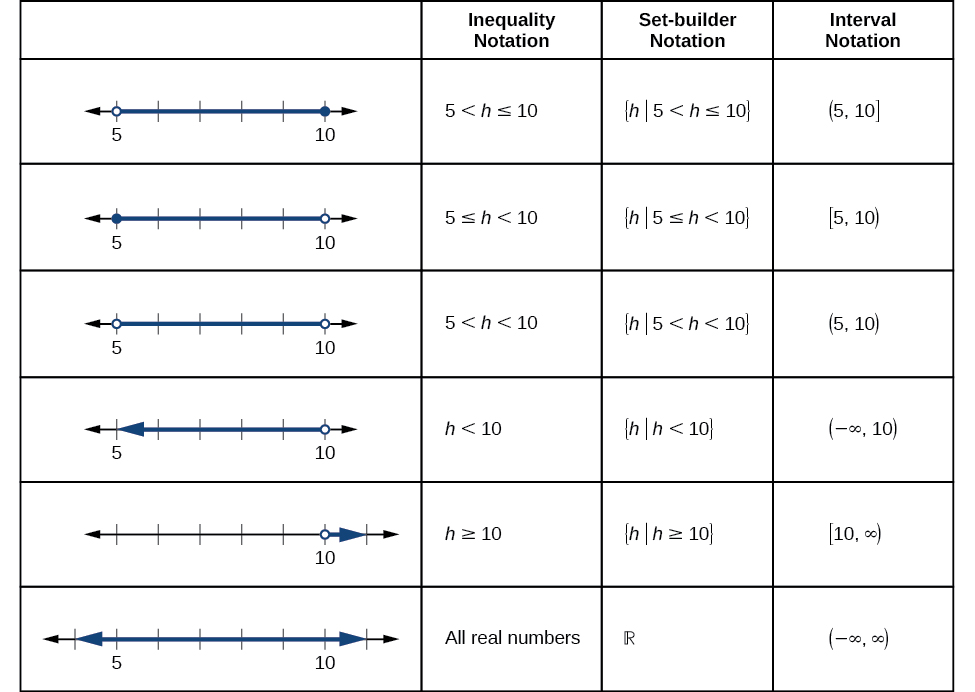| << Chapter < Page | Chapter >> Page > |
Find the domain of the function
When there is an even root in the formula, we exclude any real numbers that result in a negative number in the radicand.
Set the radicand greater than or equal to zero and solve for
Now, we will exclude any number greater than 7 from the domain. The answers are all real numbers less than or equal to or
Can there be functions in which the domain and range do not intersect at all?
Yes. For example, the function has the set of all positive real numbers as its domain but the set of all negative real numbers as its range. As a more extreme example, a function’s inputs and outputs can be completely different categories (for example, names of weekdays as inputs and numbers as outputs, as on an attendance chart), in such cases the domain and range have no elements in common.
In the previous examples, we used inequalities and lists to describe the domain of functions. We can also use inequalities, or other statements that might define sets of values or data, to describe the behavior of the variable in set-builder notation . For example, describes the behavior of in set-builder notation. The braces are read as “the set of,” and the vertical bar | is read as “such that,” so we would read as “the set of x -values such that 10 is less than or equal to and is less than 30.”
[link] compares inequality notation, set-builder notation, and interval notation.

To combine two intervals using inequality notation or set-builder notation, we use the word “or.” As we saw in earlier examples, we use the union symbol, to combine two unconnected intervals. For example, the union of the sets and is the set It is the set of all elements that belong to one or the other (or both) of the original two sets. For sets with a finite number of elements like these, the elements do not have to be listed in ascending order of numerical value. If the original two sets have some elements in common, those elements should be listed only once in the union set. For sets of real numbers on intervals, another example of a union is
Set-builder notation is a method of specifying a set of elements that satisfy a certain condition. It takes the form which is read as, “the set of all such that the statement about is true.” For example,
Interval notation is a way of describing sets that include all real numbers between a lower limit that may or may not be included and an upper limit that may or may not be included. The endpoint values are listed between brackets or parentheses. A square bracket indicates inclusion in the set, and a parenthesis indicates exclusion from the set. For example,
Given a line graph, describe the set of values using interval notation.

Notification Switch
Would you like to follow the 'Precalculus' conversation and receive update notifications?